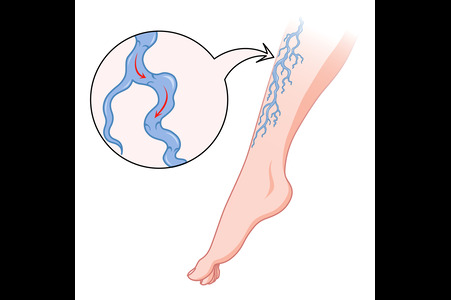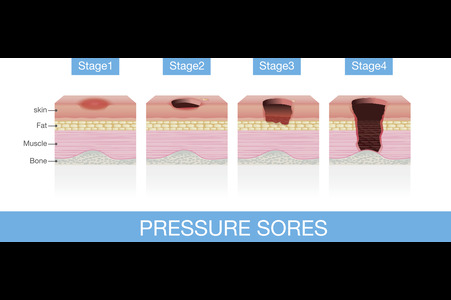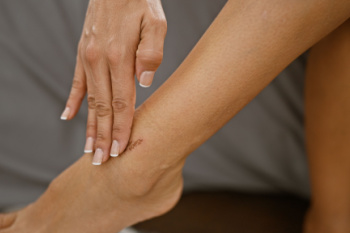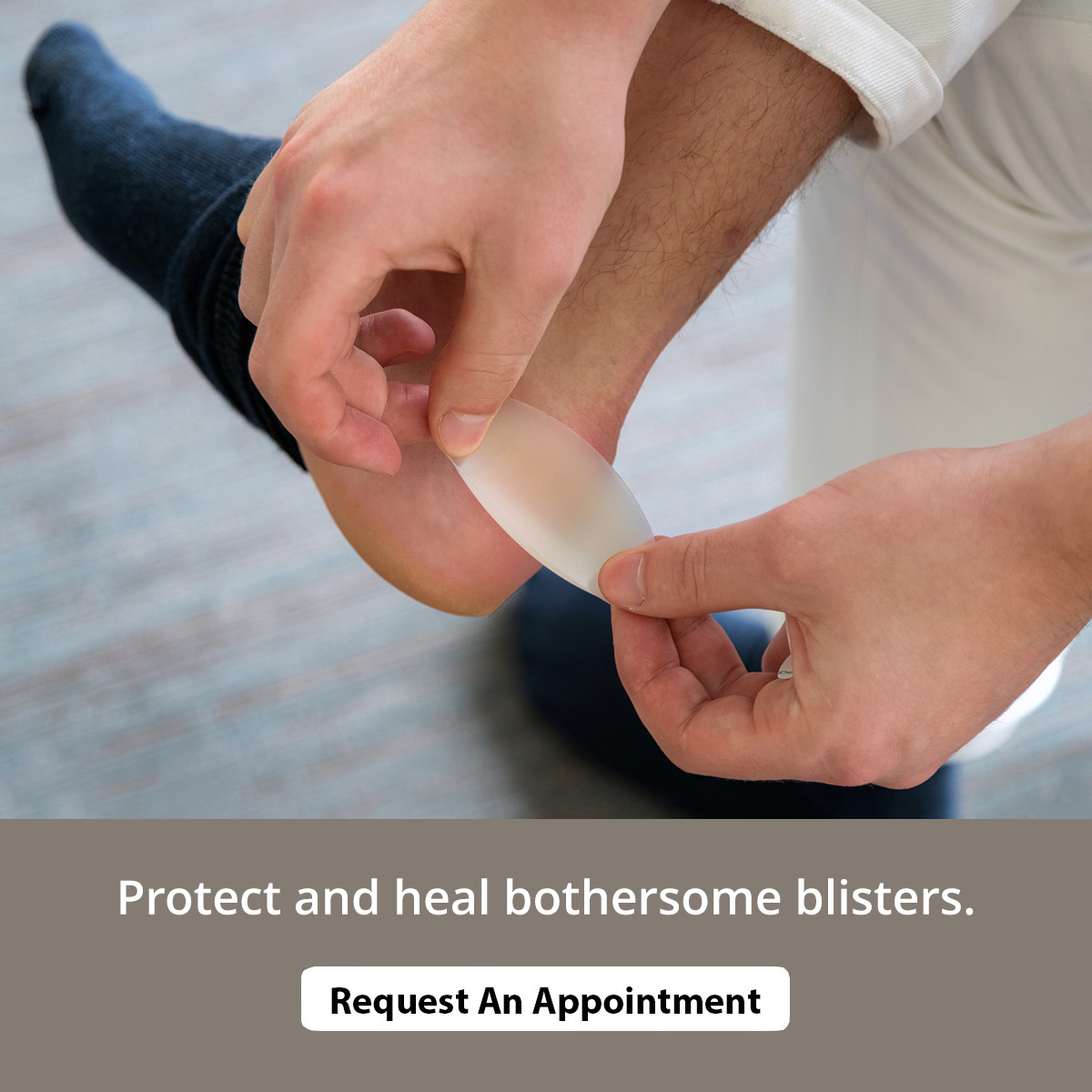Blog

Venous leg ulcers are open sores that develop when veins in the legs do not move blood back to the heart the way they should. When the valves inside the veins weaken, blood can pool in the lower legs, creating pressure that damages the skin and leads to a wound that heals slowly. These chronic ulcers often appear near the ankle and may cause swelling, itching, or a heavy feeling in the legs. Wound care specialists treat them by improving circulation with compression wraps, cleaning the wound gently, and applying special dressings that encourage healing. Elevating the legs and walking regularly also helps reduce swelling and prevent future ulcers. If you notice a sore on your leg that is not healing, it is suggested that you schedule a visit with a wound care specialist as quickly as possible.
Chronic Wounds and Complications That Slow Recovery
Most wounds follow a predictable healing pattern, but some linger far longer than expected. Chronic wounds are those that fail to progress through normal healing, often remaining open, painful, and vulnerable to infection. On the feet, ankles, and legs, these stubborn wounds can significantly limit mobility and quality of life.
Post-surgical wounds are a common source of concern. While surgery is intended to improve health, the incision site does not always close as planned. Compromised circulation, infection, or pressure can delay healing and leave patients dealing with ongoing discomfort. Professional monitoring and care are essential to ensure the wound is cleaned, dressed, and supported until closure is achieved.
Chronic pain conditions may also complicate recovery. Neuromas, for example, are thickened nerve tissues that can cause persistent pain in the foot. Although not open wounds themselves, they often interfere with normal gait and create pressure points that make the skin more prone to breakdown. Left unaddressed, this discomfort can contribute to recurring sores or prevent existing wounds from closing.
Chronic wounds require specialized attention because traditional home remedies are rarely enough. Advanced wound care techniques may involve debridement, specialized dressings, pressure offloading, or therapies designed to improve blood flow and tissue repair.
If you have a wound on your foot, ankle, or leg that is not healing or continues to reopen, call us today for expert care from our wound specialist.

Pressure sores that develop on the lower extremities are a serious concern for individuals with limited mobility, circulation problems, or chronic health conditions. These wounds occur when constant pressure on heels, ankles, or calves restricts blood flow, leading to tissue damage. Seniors, those who use wheelchairs, or patients confined to bed, are especially vulnerable. Early signs include persistent redness, warmth, or tenderness that can quickly progress into open sores if ignored. Left untreated, these wounds may become infected and interfere with walking or daily activities. Treatment often involves reducing pressure through repositioning or supportive cushions, applying advanced dressings, and addressing underlying issues such as poor circulation or diabetes. Prevention is equally important and includes frequent skin checks and protective footwear. For expert evaluation and care, it is suggested you see a wound care specialist.
Pressure Sores, Pressure Ulcers, and Arterial Ulcers Can Lead to Skin Breakdown
Not all wounds on the feet, ankles, and legs are the same. Pressure sores, pressure ulcers, and arterial ulcers may look similar at first, but develop for different reasons and require specialized care. Understanding these differences is key to proper treatment.
Pressure sores are often caused by friction at common rubbing points. Toes rubbing against each other can create small raw areas, while wearing ill-fitting shoes may lead to sores on the heel, ankle, or sides of the foot. These injuries usually begin at the surface but can quickly deepen if ignored.
Pressure ulcers, sometimes called bedsores, occur when the skin and tissue are compressed between bone and an external surface for long periods of time. On the lower extremities, they frequently appear on the heels, ankles, calves, or shins. Limited mobility, tight footwear, or prolonged bed rest can all contribute to these ulcers, which may progress through multiple stages from redness to open, infected wounds.
Arterial ulcers are different in that they result from poor circulation. When blood flow to the feet and legs is reduced, oxygen and nutrients cannot reach the tissue. Even small sores on the toes, heels, or shins may become painful, deep ulcers that heal very slowly. Unlike friction-related sores, arterial ulcers are directly tied to vascular health and often signal an underlying circulation problem.
All three types of wounds demand professional attention. A wound care specialist can determine the cause, relieve pressure, improve circulation when possible, and use advanced techniques to promote healing.
If you notice a sore on your foot, ankle, or leg that is slow to close or worsening, call us for timely care to help prevent serious complications and preserve long-term mobility.

Chronic sores on the lower extremities are wounds that fail to heal within a normal timeframe and often reappear or worsen over time. They may develop due to poor circulation, diabetes, vein disease, or repeated pressure on fragile skin. These sores are more common among older adults, individuals with limited mobility, and people with underlying health conditions that interfere with blood flow or immune function. Left untreated, chronic sores can lead to infection, significant discomfort, and reduced quality of life. Treatment may involve advanced wound dressings, compression therapy, infection control, and specialized techniques to stimulate tissue repair. Preventive care includes regular skin checks, wearing protective footwear, and proper management of health conditions that affect healing. Professional care makes a critical difference in recovery, which is why it is suggested that you see a wound care specialist if you have a chronic sore on your lower extremity.
Wounds on the feet, ankles, and legs require special attention because these areas are extremely vulnerable to infection and slower healing. Even a small scrape or cut can become more serious if not treated promptly, particularly for individuals with diabetes, poor circulation, or weakened immune systems.
Abrasions occur when the skin is rubbed or scraped against a rough surface, often leaving raw, painful patches that expose delicate tissue. On the feet and legs, these are more susceptible to contamination from shoes, socks, and daily activities. Cuts and scrapes that break through deeper layers of the skin create open wounds that may bleed and require proper cleaning and covering to reduce risk of infection.
Some injuries are more complex. Traumatic wounds, such as lacerations caused by accidents or falls, can damage not only the skin but also the underlying structures of the foot or ankle. Puncture wounds from sharp objects are another concern, as they are often narrow and deep, allowing bacteria to become trapped inside. These injuries may not look severe on the surface, but can result in serious infection if not evaluated by a wound specialist.
Because the lower extremities play such a vital role in mobility, untreated wounds in this region can interfere with daily activities, and, in severe cases, threaten long-term health. Proper wound care includes cleaning, dressing, and monitoring the injury, and in some cases, advanced treatment to close or debride the wound and support faster healing.
If you have a cut, abrasion, or puncture wound on your foot, ankle, or leg that is not improving or appears infected, call us for help today. Prompt treatment ensures effective healing and helps protect your mobility and overall health.

